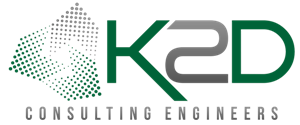
New Title 24 compliance requirements roll out every three years. California has remained at the forefront of clean energy leadership thanks to advancements in clean energy policy, energy efficiency, renewable energy development, and investment in energy and transportation innovation.
“The California Energy Commission is leading the state to a 100 percent clean energy future… the Energy Commission is committed to reducing energy costs and environmental impacts of energy use while ensuring a safe, resilient, and reliable supply of energy.”
-CEC
The 2019 Title 24 compliance standards take bold new steps towards energy reduction goals to make California Carbon Zero by 2030.
2019 Energy Efficiency Standards
The become effective beginning January 1, 2020. There are important changes for both residential and nonresidential buildings. For residences, one of the biggest changes is requiring solar energy for single-family homes and multi-family buildings that are up to three stories high.
California is the first state with this requirement. 2019 Title 24 compliance is expected to use about 53% less energy than residences under the 2016 standards. This should save Californians $1.7 billion in energy costs over the next 30 years. It is also equal to removing 115,000 fossil fuel cars from the road.
For non residential buildings, the biggest change involves lighting upgrades expected to bring about 30% less energy use.On average, indoor lighting power allowances are reduced by 37% for the complete building method and 29% for the area category method. The California Energy Commission estimates this will be the single largest savings related to 2019 Title 24 compliance.
There are also changes involving ventilation and HVAC systems. Also notable are healthcare facilities as a newly regulated building type.
Energy Technology is Improving Rapidly
Title 24 compliance is at the core of achieving substantial and aggressive energy reduction goals such as California Carbon Zero. A staggering 38% of electrical use goes towards commercial and industrial lighting. Lighting that often remains on 24X7 regardless of actual need. Solutions can be as simple and inexpensive as installing occupancy control sensors, LED lighting systems, and letting more sunlight shine in. Intelligent LED lighting systems provide integrated networking and controls enabling facilities to achieve Title 24 compliance goals.
For homes, Title 24 compliance encourages (not required) demand responsive technologies. Batteries are the most common on-demand storage devices used in renewable energy systems. Demand responsive technology is increasing on both the residential and grid-wide scale. Including energy storage fills, the important role of balancing power supply and demand. It enables a smooth and continuous power supply, even when weather conditions aren’t ideal for generating renewable energy.
Grid parity is a term describing when alternative energy generates power at cost and performance levels equal to or less than electricity generated by conventional methods. New technology is moving us away from centrally generated electricity to modular, consumer-driven, and evenly distributed power generation.
California’s title 24 compliance is the leader in renewable and energy efficiency. Most other states look to California for leadership and guidance. For further information or to schedule a consultation with an expert MEP Engineer please contact K2D at 310.935.3773 or visit www.K2D.com to learn more.
